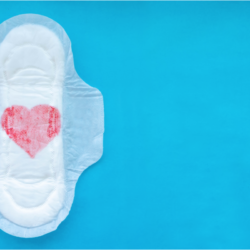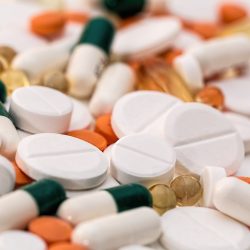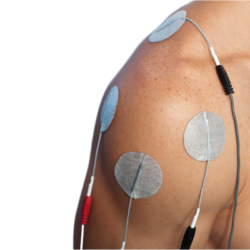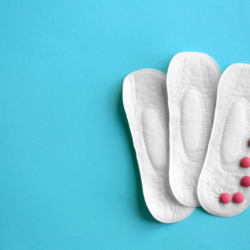Endometriosis is a condition affecting women of childbearing age. This pathology usually results in severe pain during menstruation and fertility problems.
It is the presence, outside the uterus, of one or more clusters histologically similar to the endometrium (endometriomas) that define in particular the presence of endometriosis. These clusters are preferably located in the ovaries, the posterior cul-de-sac and the uterosacral ligaments.
What is endometriosis ?
When it does, endometriosis mainly results in attacks of stomach aches that are sometimes unbearable, especially during menstruation or sex, and fertility problems.
Nowadays, nearly 10% of women aged 30 to 40 are said to be affected by this pathology.
However, there are 2 cases :
Adenomyosis :
That is, endometriosis inside the uterus. It is caused by an abnormality in the junction area between the endometrium (uterine lining) and the myometrium (uterine muscle), which allows endometrial cells to infiltrate the muscle. This type of localization is consequently responsible for uterine hemorrhages, dysmenorrhea, pelvic congestion and dyspareunia.
External genital endometriosis :
During genital external endometriosis, endometrial tissue grows outside the uterus into the surrounding organs (tubes, ovaries, rectum, bladder, peritoneum, diaphragm, etc.) in the form of localized lesions of endometriosis, cysts and / or adhesions. The symptomatology, of a cyclical nature, manifests itself in particular by ovulatory pain, and, during menstruation, by abnormalities of the cycle and by inflammation, caused by the occurrence of microhemorrhage at the lesions, in a rhythmic manner by the cycle ovarian and menstrual. When menstruation occurs, the blood collection must be absorbed; which provokes an intense inflammatory reaction.
The clinical signs may worsen in the event of FSH hyperactivity (generating hyperestrogenia) with aromatization, if there is indeed a secretory insufficiency or ineffectiveness in progesterone, and by inflammation.
What are the symptoms of endometriosis ?
The symptoms seen in endometriosis are actually due to endometrial fragments scattered throughout the abdominal cavity. Under the action of sex hormones, these fragments proliferate and bleed, which consequently causes local inflammation and the appearance of cysts, scars and fibrous adhesions between the organs of the abdomen (outside the uterus, tubes, ovaries, ligaments between uterus and pelvis, rectum, bladder, intestines, diaphragm, peritoneum, kidneys, etc.)
Depending on their location, these fragments will cause pain (for example in the event of adhesions between two organs), compromise the ability to have a child (when the lesions interfere with the meeting between the egg and the spermatozoa, or during a cyst ovarian), but also sometimes cause a permanent urge to urinate (when a fragment disturbs the functioning of the bladder).
The symptoms depend on the topography of the implantations and can then consist of dysmenorrhoea, dyspareunia, infertility, dysuria and pain during defecation. The severity of symptoms, however, is not related to the stage of the disease.
What is the endometrium ?
The endometrium is the mucous membrane that lines the inside of the uterus and that allows, after fertilization, the establishment and development of the embryo. The cells that make up the endometrium are sensitive to sex hormones (estrogen and progesterone).
Before ovulation, under the influence of these hormones, the endometrium prepares to welcome a possible embryo. If fertilization does not take place, the endometrium therefore returns to its initial state and effectively eliminates the cells that could have received the embryo. This is what we call: the rules !
Can adolescent girls suffer from endometriosis ?
Endometriosis can appear in adolescence in the form of painful periods, a symptom that is relatively common in young girls who are pubescent. I t is estimated that two-thirds of adolescent girls with painful periods may actually have endometriosis.
Today, the diagnosis of endometriosis is made on average seven years after the first symptoms. Often, taking a birth control pill masks the illness and conceals some symptoms. This will only be identified when contraception is stopped, due to the return of pain and the finding of infertility.
What are the causes of endometriosis ?
The causes of the presence of endometrial fragments in the abdominal cavity are poorly identified. Endometriosis is a multifactorial disease, related to hormonal, environmental and genetic factors:
- Family history of 1st degree relatives with endometriosis
- Late or nulliparous pregnancy
- Early menarche
- Late menopause
- Shortened menstrual cycles with heavy and prolonged periods
- Müllerian canal malformations
- Exposure to diethylstilbestrol in utero
Can endometriosis be treated naturally with medicinal plants ?
Chaste tree :
The hormonal activity of chaste tree generally improves the hormonal cycle. This plant supports irregular cycles and amenorrhea. Chaste tree is traditionally used in painful periods. It is also an anti-estrogen and anti-androgen plant which causes a rise in the concentrations of progesterone in the middle of the cycle. Also emmenagogue, chaste tree regulates the menstrual cycle by stimulating and facilitating menstrual blood flow in the pelvic region and uterus. This plant corrects cycle abnormalities and restores the phases of the menstrual cycle.
Lady’s mantle :
Lady’s mantle is traditionally used to treat ailments in women. This plant has anti-endometriotic activity by reducing endometriosis lesions and the inflammatory activity associated with it.
Turmeric :
Many compounds in turmeric exhibit anti-inflammatory and analgesic effects. These beneficial effects are demonstrated in response to acute or chronic inflammation.
Licorice :
Licorice glabridin is a phytoestrogen that binds to the estrogen receptor and stimulates creatinine kinase activity in the uterus. It is of interest in polycystic ovary syndrome.
Feverfew :
The parthenolide contained in feverfew inhibits the development of endometriosis by suppressing the inflammatory peritoneal environment.







